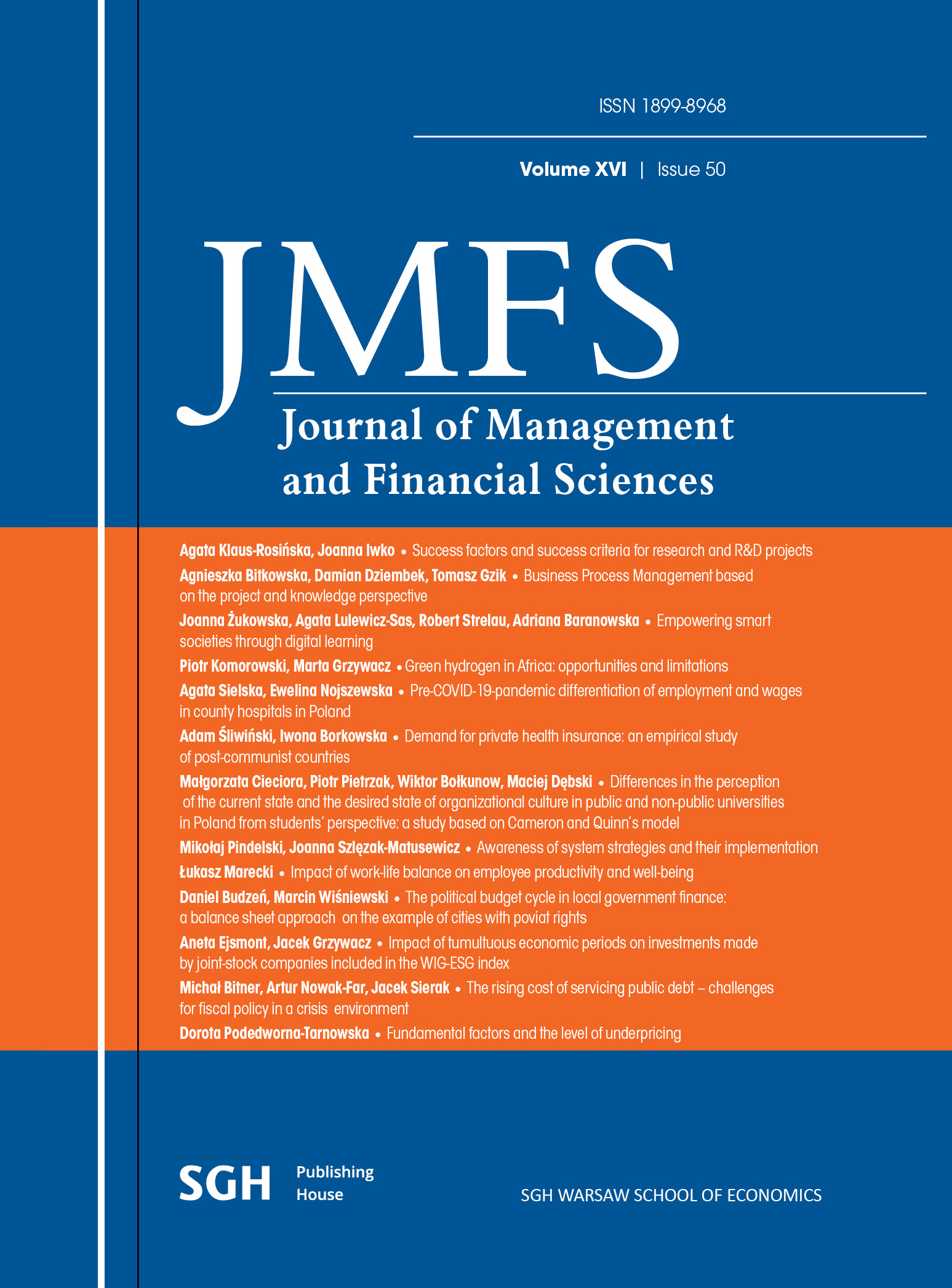Impact of work-life balance on employee productivity and well-being
Main Article Content
Abstract
Family is as important in our work as in our lives. Unipolar preferences can lead to an unbalanced life. This study examines the effect of work-life balance on employee productivity and well-being, as post-positivist research seeks to explain. This research is divided into two main categories: analytical and descriptive, and this article aims to evaluate the effect of work-life balance on employee productivity. Other sources such as research materials are selected based on the needs of the study. The research shows that effective work-life balance strategies can improve worker health and productivity. Unlike unhappy employees who struggle to balance work, family, and personal life, happy employees are self-motivated.
Downloads
Article Details

This work is licensed under a Creative Commons Attribution 4.0 International License.
References
Arulrajah, A. A., Opatha, H. H. D. N. P. (2012). An exploratory study on the personal qualities/ Characteristics expected by the organizations for key HRM jobs in Sri Lanka.
Caesens, G., Stinglhamber, F., Demoulin, S., De Wilde, M. (2017). Perceived organizational support and employees’ well-being: The mediating role of organizational dehumanization. European Journal of Work and Organizational Psychology, 26 (4), pp. 527–540.
Carnevale, J. B., Hatak, I. (2020). Employee adjustment and well-being in the era of COVID-19: Implications for human resource management. Journal of business research, 116, pp. 183–187.
Clockify (2017). Work-Life Balance: 2023 Statistics & Facts You need to know.
Emre, O., De Spiegeleare, S. (2021). The role of work – life balance and autonomy in the relationship between commuting, employee commitment and well-being. The International Journal of Human Resource Management, 32 (11), pp. 2443–2467.
Guest, D. E. (2017). Human resource management and employee well‐being: Towards a new analytic framework. Human resource management journal, 27 (1), pp. 22–38.
Gyanchandani, R. (2017). A qualitative study on the work-life balance of software professionals. IUP Journal of Organizational Behavior, 16 (4), pp. 53–67.
Hayman, J. (2010). Flexible work schedules and employee well-being. New Zealand Journal of Employment Relations, 35 (2), pp. 76–87.
Humayon, A. A., Raza, S., Kaleem, N., Murtaza, G., Hussain, M. S., Abbas, Z. (2018). Impact of supervision, working condition and university policy on work-life balance of university employees. European Online Journal of Natural and Social Sciences, 7 (1).
Kalliath, P., Kalliath, T., Chan, C. (2017). Work – family conflict, family satisfaction and employee well‐being: A comparative study of Australian and Indian social workers. Human Resource Management Journal, 27 (3), pp. 366–381.
Lestari, D., Margaretha, M. (2021). Work life balance, job engagement, and turnover intention: Experience from Y generation employees. Management Science Letters, 11 (1), pp.157–170.
Naithani, D. P., (2010). Recession and work-life balance initiatives. Naithani, P. (2010). Recession and work-life balance initiatives. Romanian Economic Journal, 37, pp. 55–68.
Nierenberg, B., Alexakis, G., Preziosi, R. C., O’Neill, C. (2017). Workplace happiness: An empirical study on well-being and its relationship with organizational culture, leadership, and job satisfaction. International Leadership Journal, 9 (3), pp. 2–23.
Pandiangan, S. M. T., Rujiman, R., Tanjung, I. I., Darus, M. D. Ismawan, A. (2018). An Analysis of the Factors which Influence Offering the Elderly as Workers in Medan. IOSR Journal of Humanities and Social Science (IOSR-JHSS), 23 (10), pp. 76–79.
Poulose, S., Sudarsan, N. (2017). Assessing the influence of work-life balance dimensions among nurses in the healthcare sector. Journal of Management Development, 36 (3), pp.427–437.
Sathyanarayana, S., Satzoda, R. K., Sathyanarayana, S., Thambipillai, S, (2018). Vision-based patient monitoring: a comprehensive review of algorithms and technologies. Journal of Ambient Intelligence and Humanized Computing, 9, pp. 225–251.
Silaban, H., Margaretha, M. (2021) ‘The Impact of Work-Life Balance toward Job Satisfaction and Employee Retention: Study of Millennial Employees in Bandung City, Indonesia. International Journal of Innovation and Economic Development, 7 (3), pp. 18–26.
Smartsheet (2019). How to Improve Work-Life Balance: 17 Tips for Success. Smartsheet.
Stankevičienė, A., Tamaševičius, V., Diskienė, D., Grakauskas, Ž., Rudinskaja, L. (2021). The mediating effect of work-life balance on the relationship between work culture and employee well-being. Journal of Business Economics and Management, 22 (4), pp. 988–1007.
Taşdelen-Karçkay, A., Bakalım, O. (2017). The mediating effect of work – life balance on the relationship between work – family conflict and life satisfaction. Australian Journal of Career Development, 26 (1), pp. 3–13.
